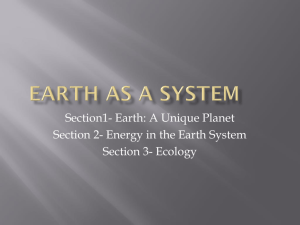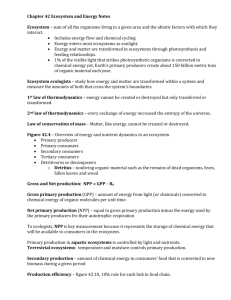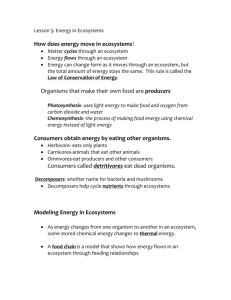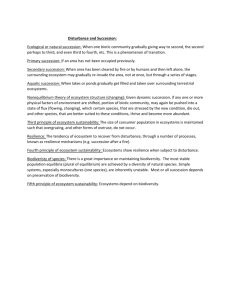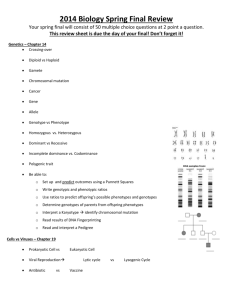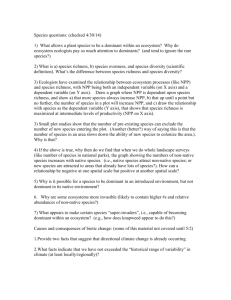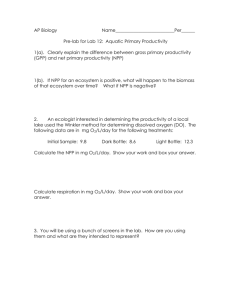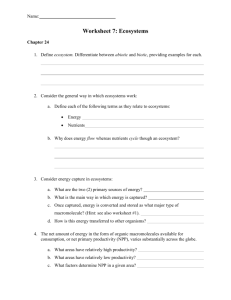food chains - Teacher Notes
advertisement
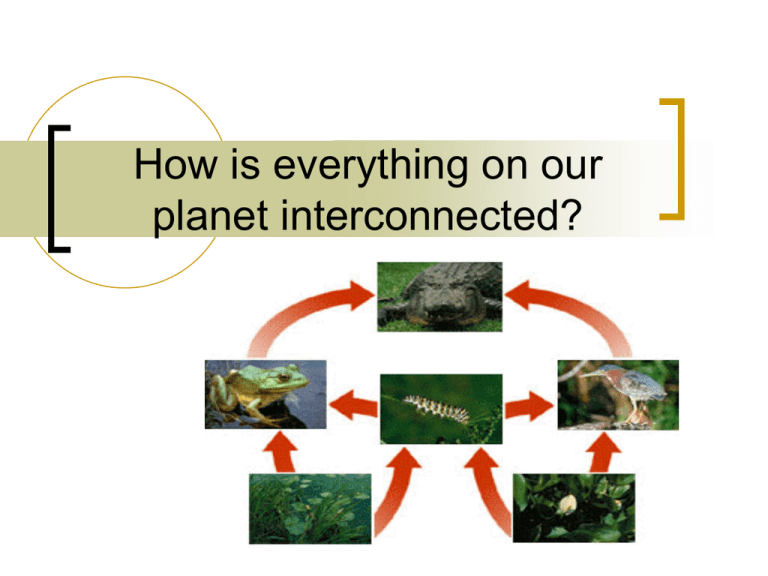
How is everything on our planet interconnected? Layers of Our Planet Geosphere: solid part of earth that consists of soil, rock and sediments. Atmosphere: mixture of gases surrounding earth. Hydrosphere: All water found on earth. Biosphere: All areas on the planet that life can exist. How Does Energy Flow Through an Ecosystem? FOOD CHAIN FOOD WEB ENERGY PYRAMID Why Does Energy Decrease at Higher Trophic Levels? Some of the energy is used for organism’s growth. Lost through heat (entropy) Fecal Waste What Are Biomes? A large region of the planet characterized by a specific climate and certain types of plants and animal communities. Depends on Temperature & Rainfall (climate) How do we measure an ecosystem’s productivity? GPP (Gross Primary Productivity): Rate at which an ecosystem’s producers convert solar energy into chemical energy as biomass (cells, leaves, roots and stems) NPP (Net Primary Productivity) = GPP – Rate at which producers use chemical energy Most Productive Ecosystems Least Productive Ecosystems Estuaries Wetlands (swamps and marshes) Rainforest Open oceans* Tundra Desert * However the planet has so much open ocean that it produces more of Earth’s NPP than any other ecosystem! Net Primary Productivity (NPP) How Do Ecosystems Change? Ecological Succession: gradual change and replacement of species in a community. Primary Succession: occurs on a surface where no ecosystem existed before. Secondary Succession: occurs where an ecosystem already existed (disrupted by humans, animals, storms)

